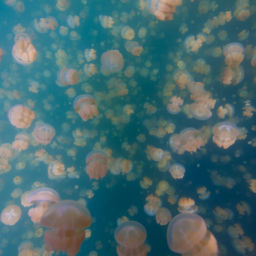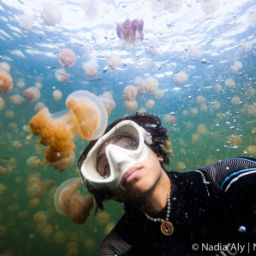If you’re planning to snorkel Palau’s famous Jellyfish Lake, where millions of stingless jellyfish create a scene unlike anywhere else in the world, you may want to put a hold on your travel plans, because Jellyfish Lake is missing one key ingredient: jellyfish. A number of tourists in the last few weeks have reported that although they snorkeled the lake for quite some time they didn’t spot a single jellyfish.
The lake is a perennial favorite for visiting travelers, who swim and snorkel (scuba diving is prohibited in the lake) with the jellyfish, whose numbers have plummeted since early April. Authorities estimated that early in that month, the number of jellyfish in the lake dropped from around 8 million to only 600,000. Adult jellyfish have reportedly completely died out, leaving only a few juveniles.
Aside from disappointed snorkelers, and a potentially severe hit to the nation’s tourist income, scientists are concerned because these golden jellyfish, as they’re known, are a unique subspecies, found nowhere else. This particular species evolved in isolation in this and four other lakes, which are separated from the oceans but still contain sea water, fed by underground channels.
Where did the jellyfish go?
So what’s going on? No one knows for sure, but drought is considered one possible explanation. Palau is experiencing a severe, and historic, drought, with rainfall over the past four months at the lowest rate in more than 65 years. The effects of this may be further exacerbated by higher-than-usual temperatures, caused by this year’s particularly powerful El Niño, which is affecting the entire Pacific region. A lack of new water-flow into the lake, coupled with increased evaporation caused by the higher temperatures, have made the lake more saline than usual, making it unfit to sustain the jellyfish population.
There’s a spot of hope in this tale, however, as scientists report there are enough polyps, the “seeds” that create jellyfish, to make it very likely that — if and when conditions return to normal — the jellyfish population of the lake will make a full recovery. However, the phenomenon does worry scientists nonetheless, as it highlights the vulnerability of the jellyfish to warming weather, putting them at risk if global warming continues unabated.
Palau’s famous lake saw a population crash once before, in 1999, when numbers recovered within 18 months. We can only hope something similar will happen this time around.



